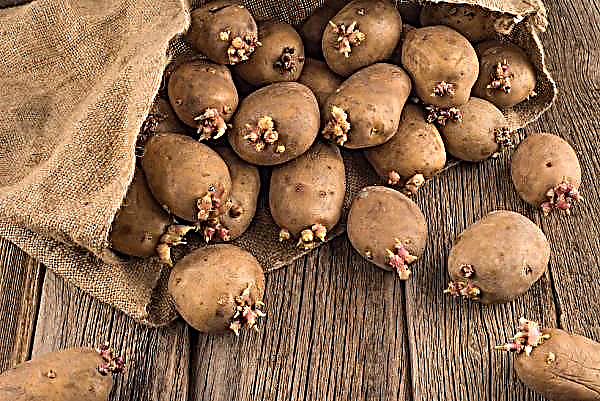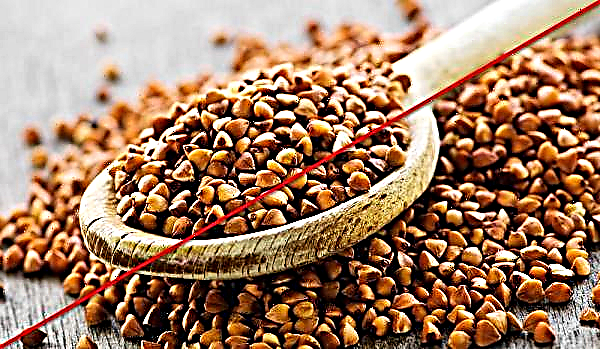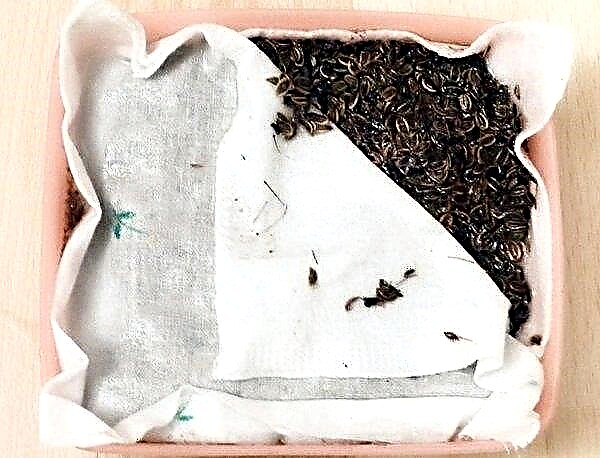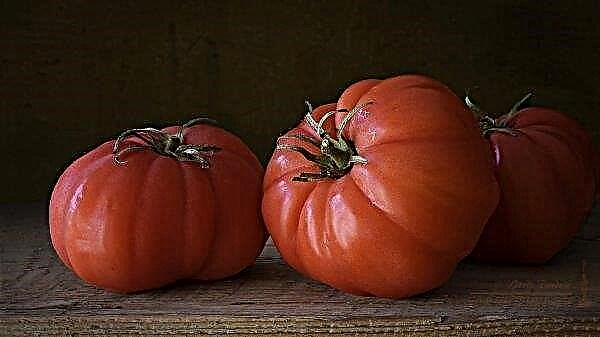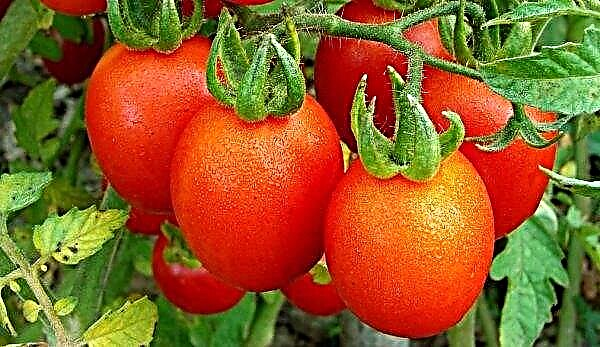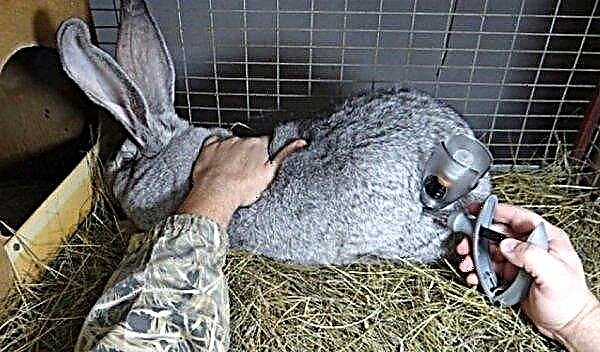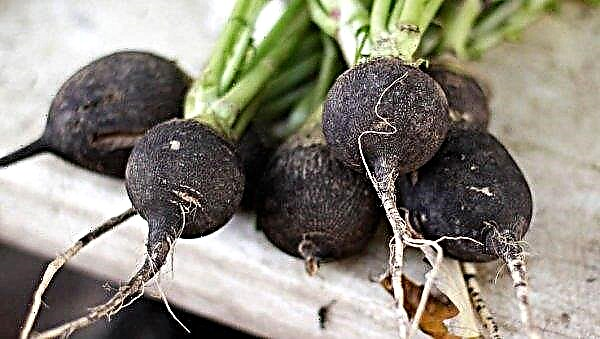Among the mid-ripening high-yielding varieties of carrots Moscow Winter stands out, possessing not only a good presentation, but also high nutritional qualities that last for a long time. You will learn more about this wonderful variety from this article.
Characterization and description of the variety
Moscow winter belongs to mid-season varieties. It is sown before winter, but it can also be sown in spring (April - May). It forms smooth, elongated-cylindrical fruits with a blunt end, orange in color, weighing 100-170 g, 15-18 cm long, 5 cm in diameter, with a pleasant smell. The pulp of root vegetables is juicy, tender, dense, very tasty.
Selection history
This carrot variety was developed by S.P. Agapov, a breeder and State Prize laureate, by crossing Valeriya and Parisian carrot varieties.
 Root crops are characterized by excellent taste.
Root crops are characterized by excellent taste.
Productivity
Moscow winter carrot high yieldfrom 5 to 7 kg per 1 m² (subject to a favorable climate and proper care of plants).
Ripening time
It has average ripening period: From the first seedlings to harvesting should take 65-100 days.
Did you know? The longest carrots listed in the Guinness Book of Records in September 2007, was grown in the UK by a farmer Joe Atherton. Its size was 5.84 m.
Pros and cons of the variety
- Moscow winter carrots are characterized by many positive qualities:
- long-term storage;
- beautiful presentation;
- resistance to cold;
- universal application;
- resistance to flowering and most diseases;
- unpretentious care;
- can be sown in spring and autumn;
- contains a large number of vitamins and minerals;
- the fruits, speaking above the earth, do not turn green;
- preserves taste until spring.
The disadvantages include only the tendency to crack fruits as a result of excessive watering.
 Like any other carrot, Moscow Winter is pretty unpretentious in care
Like any other carrot, Moscow Winter is pretty unpretentious in care
Cultivation agricultural
You can sow seeds at the end of April or in early May, when the air temperature warms up to +12 ... + 13 ° С, and the soil - up to + 5 ° С. Crops for winter are carried out approximately at the end of October at an air temperature of + 5 ° C.
Choosing a place and preparing the garden
Moscow winter carrots fruit well in well-lit places, without strong winds and drafts, because in the shade the fruits partially lose their taste and grow smaller.
The soil should be loose, light, without stagnation of water, loamy. They begin to prepare it after harvesting, cleaning it of weeds and other garbage, adding organic fertilizers (humus, compost, manure) in small quantities to increase fertility and digging it deep. It is advisable to add peat, sand, wood ash, so that the earth is saturated with oxygen. In the spring, potassium sulfate can be added.
 It is enough to prepare well-drained, loosened soil for planting and fertilize it
It is enough to prepare well-drained, loosened soil for planting and fertilize it
Crop rotation rules
Highly crop rotation plays an important role in the cultivation of this variety of carrots. It lies in the fact that it is not recommended to sow root crops after parsley, parsnip, celery, dill. It is possible after tomatoes, onions, cucumbers, potatoes, cabbage, garlic.
Seed preparation and sowing
Carrot seeds are distinguished by the fact that they germinate for a very long time. To speed up germination, they must first be prepared. This process consists of the following steps:
- Seeds should be sorted and disinfected in a weak solution of potassium permanganate (10-15 minutes) or buy ready-made in a specialized store.
- Considering that carrots emerge later than weeds, the seeds can be mixed with sand or other early crops (lettuce, radish) to preserve the beds during weeding.
- Seeds are sown to a depth of 2 cm in pre-moistened furrows.
- Top covered with earth.
- They cover it with a film to retain moisture, protect against insects and increase the temperature, accelerating the germination process.

Landing pattern
It is necessary to sow Moscow winter carrots, adhering to a distance between plants of 2-3 cm, between rows - up to 30 cm. After that as the first shoots emerge, they must be thinned out to form large and even root crops.
Did you know? The fact that carrots are good for vision is a myth that was actively spread by British intelligence during World War II. He was supposed to explain the increased effectiveness of air raids, while in reality the aircraft were equipped with radars of improved design.
Features of further planting care
Further care for seeded carrots consists in timely weeding of plants, regular watering, top dressing, loosening the soil and pest control. All these measures directly affect the quantity and quality of the crop.
Feed and watering scheme
Irrigation and fertilizers play a very important role in the formation of root crops and improving the palatability of Moscow winter carrots. Watering the bed is necessary in a timely manner; it is desirable to adhere to the same time intervals, due to which the root crops will form correctly, have a beautiful presentation and good taste.

First watering carried out after sowing carrots in open ground using a spray bottle (so as not to wash the seeds out). During this period, it is necessary to preserve the moisture of the earth for better germination, covering the bed with a plastic film or a mulch layer of 5-10 cm (hay, compost, peat, etc.). When the first shoots appear watering is carried out every 2-3 days, with the calculation of 5-6 liters of water per 1 m² of land (water must be warm and settled). Additionally, the beds are watered after thinning the plants.
During the formation of root crops (in June) watering is carried out once a week, 10-12 liters per 1 m² of beds. Later, you need to water the beds 1 time in 10 days, 15–20 liters per 1 m².
Important! 2-3 weeks before harvesting, watering should be stopped so that the carrots are stored longer and not spoiled.
Fertilizer application:
- First feeding carried out when 2 leaves are formed on the plant. To do this, you can take 30 g of potassium salt, 25 g of ammonium nitrate, 30 g of superphosphate and dilute in 10 l of water. This solution is consumed per 10 m² of beds.
- Second feeding carried out after thinning carrots, using the same solution or Nitrofoski (1 tablespoon per 10 liters of water), Mortar (60 g per 10 liters of water).
- Next feeding introduced during the growth period of root crops to increase their taste, especially sugar content. Use dry ash or infusion of wood ash (2 cups per 10 liters of hot water, insist 2 days).
- Last held 3 weeks prior to harvest using humates.

Thinning planting
This procedure can be done then when seedlings have 2 true leaves. The interval between the seeds should be 3 cm. The next thinning is carried out 3-4 weeks after the first, if there are 4-6 true leaves on the plants; between the root crops a distance of 5-6 cm is left.
Loosening and weed control
Weeding and loosening of the soil is done after watering and after each thinning of carrots. Initially, these measures must be done very carefully so as not to damage the root crops, which sprout much later than weeds. Further, when the fruits are formed, in addition to loosening and weeding, it is necessary to carry out the earthing up of the rows, covering the tops of root crops and preventing their greening.

Pest and Disease Control
Most often, Moscow winter carrots are exposed to such pests and diseases:
- umbrella leaf - an insect that brings carrots harm in the form of twisting and deformation of the leaves. It is recommended to treat the plants with Decis preparations (2 ml per 10 l of water), Kinmix (2.5 ml per 10 l of water);

- carrot fly - the larvae of this pest infect root crops, as a result of which they become unusable. It is necessary to deal with them, adhering to crop rotation and treating with yarrow broth (1 kg per 10 l of water), wormwood broth (2 kg per 10 l of water), Fitoverm drug (10 ml per 5 l of water);

- alternariosis - fungal disease, manifested in the form of mold and spots. Preventive methods are crop rotation and the acquisition of quality seed. For treatment, chemical preparations “Fitosporin” (6 g per 10 l of water), “Gamair” (10 tablets per 10 l of water) are used;
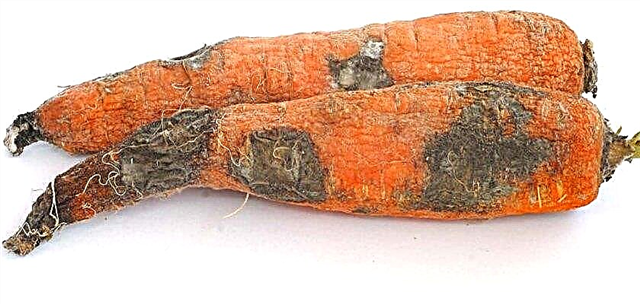
- fomosis - A disease that affects the tops and roots of carrots in the form of gray-black spots. Crop rotation and clearing of the site of weeds help prevent its occurrence. Also use such means as 1% Bordeaux liquid, 5% solution of Fundazol.
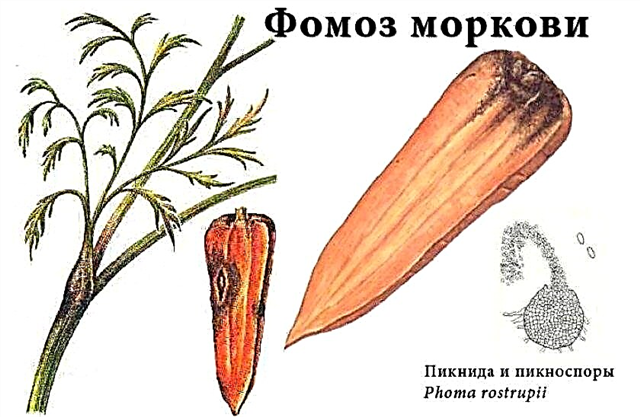
Features of harvesting and storage of crops
Harvest Moscow winter begin to harvest in late September - early October. To do this, in the evening, you can moisten the soil a little, so that root crops are more easily pulled out of the ground. It is recommended to harvest carrots in dry weatheruntil frost sets in. You can’t tap the roots against each other, shaking the ground, as the Moscow winter variety is sensitive to damage - because of this, the fruits will be stored less than usual. Tops need to be cut immediately. After that, the carrots are laid out under a canopy to dry.
Important! It is undesirable to harvest Moscow winter carrots ahead of schedule, since only well-ripened root crops are stored longer and do not lose their nutritional qualities.
Root crops are stored in a dark, clean, cool room at a temperature of 0 ... + 10 ° C, in wooden disinfected boxes, sprinkled with sand.
 Storage of carrots in sandboxes
Storage of carrots in sandboxes
Carrots cultivars Moscow winter cottagers are recommended to be grown on personal plots. She is unpretentious to care for her, gives a high yield, has excellent nutritional qualities. It can be used both raw and as part of various dishes, juices, blanks for the winter.
Network user reviews
ADVANTAGES: Excellent taste of root crops, good germination of seeds
DISADVANTAGES: no
I have known the Moscow Winter carrot for a long time. I like this carrot for its taste and appearance, and for the fact that it is stored perfectly without loss, remaining juicy and tasty all winter. But recently I began to understand the name “Moscow Winter” in a new way. This is the third year I have been sowing carrots of the Moscow Winter variety for winter. Carrots sown before winter emerge earlier than during spring crops, and therefore you can already use it at the beginning of summer. One thing is bad - all this carrot should be used in summer and autumn, because it will not be stored in winter. But for winter storage, you can sow it again in the spring. When winter sowing, you must correctly select the sowing date so that the carrots do not have time to ascend to frost. Therefore, I prepare the bed in advance, and I sow it already in the frozen ground. Seeds should be dry, and their quantity increased in comparison with spring sowing. I fall asleep seeds prepared in advance by humus and garden soil.





